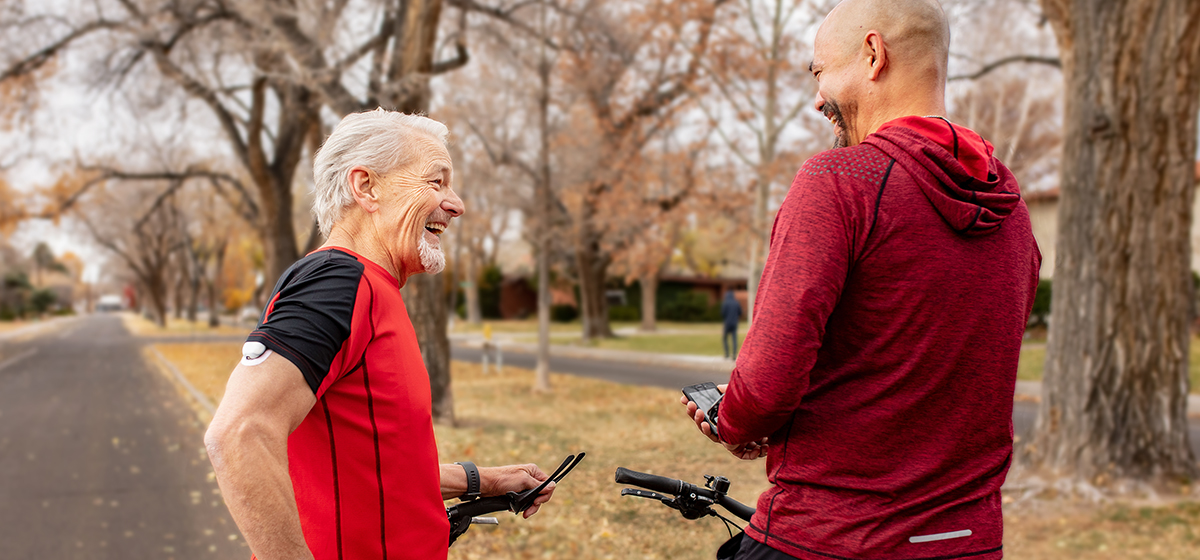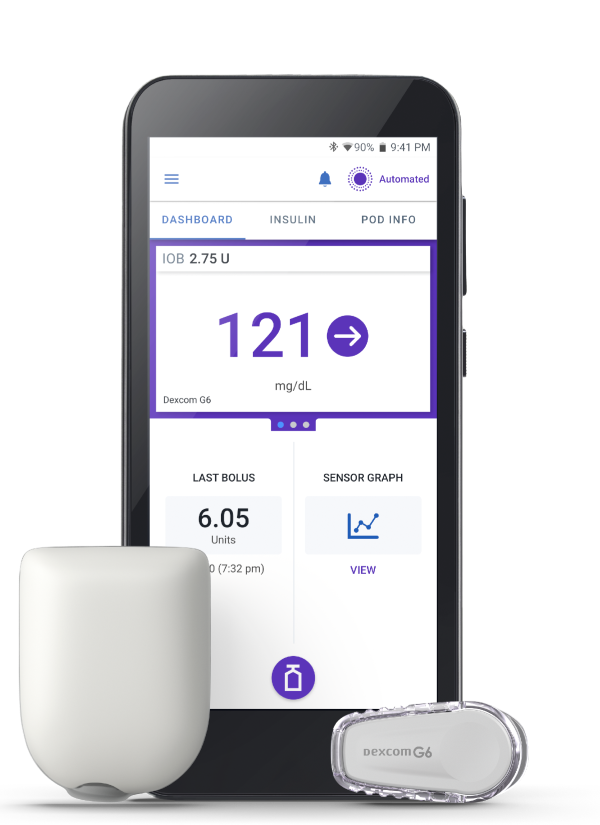Simplify life with Omnipod®

Omnipod® is covered under Medicare Part D
Did you know that you could be paying less for your Omnipod prescription? There are Medicare Part D plans with preferred coverage for Omnipod – meaning, lower
co-pays for you.
97% would recommend Omnipod® to a friend


Omnipod 5
With Omnipod 5 Automated Insulin Delivery System, your diabetes devices are in sync without tubes to tie you down. It’s everything Omnipod users love about DASH‡—waterproof†, wearable, tubeless—and so much more:
- SmartAdjust™ technology automatically increases, decreases, or pauses insulin every 5 minutes, based on your customized target—helping to protect against highs and lows, day and night.1,2
- Activity feature when enabled, reduces insulin delivery when glucose typically goes low, like when exercising.
- SmartBolus calculator, the only AID system with a built-in bolus calculator that automatically incorporates your CGM data and trend, so you don’t have to.
You will still need to bolus for meals. With Omnipod 5, this is done with the Omnipod 5 App or Controller.
†The Pod has an IP28 rating for up to 25 feet for 60 minutes. The Omnipod 5 Controller is not waterproof. The Dexcom G6 sensor and transmitter are water-resistant and may be submerged under eight feet of water for up to 24 hours without failure when properly installed.
Omnipod DASH®
A tubeless, wireless insulin management system that lets you experience more freedom with fewer daily hassles. Wear the Pod for 3 days (up to 72 hours) of continuous insulin delivery, without multiple daily injections. And the convenience doesn’t stop there. Get it all through the pharmacy, with no commitment. Even the Personal Diabetes Manager (PDM) comes at no charge to you‡.
- Tubeless: No more tubes tangled on door knobs. The tubeless Pod can be worn discretely without having to clip anything on.
- Waterproof*: Wear the Pod in the shower, the ocean, or running in the rain. Just keep the PDM dry.
- Integrated Food Library: Remove yourself from the equation with an integrated bolus calculator, presets, and the CalorieKing® library of 80,000+ foods (English only).
*The Pod has an IP28 rating for up to 25 feet for 60 minutes. The PDM is not waterproof.
DASH is cleared for anyone with insulin requiring diabetes.


Imagine a life without tubes, multiple daily injections or long-acting insulin
Open enrollment is a great opportunity to try Omnipod - the tubeless, wireless, continuous insulin management system. For the majority of Omnipod DASH® Medicare customers, the co-pay through the pharmacy channel is less than $50 per month.**


Check your Benefits
Fill out the form below and we'll send you a secure link to your email to electronically sign. An Omnipod Specialist will reach out to you directly via phone, text or email to discuss your coverage. We want to help you get started on your Omnipod journey as soon as possible.
Talk to an Omnipod Specialist
Still have more questions about the Omnipod DASH® System? Enter your information below and one of our Omnipod Specialists will call you in 24-48 hours for a one-on-one chat.
1. Study in 80 people with T1D aged 2 - 5.9 yrs involving 2 weeks standard diabetes therapy followed by 3 months Omnipod 5 use in Automated Mode. Average time in Target Glucose range (from CGM) for standard therapy vs Omnipod 5 = 57.2% vs. 68.1%. Average time in Target Glucose range (12AM -< 6AM) from CGM in standard therapy vs. Omnipod 5 = 58.2% vs 81.0%. Average A1c in standard therapy vs. Omnipod 5 = 7.4% vs. 6.9%. Median time with low blood glucose from CGM: standard therapy = 3.43% vs. 2.46%. Sherr JL, et al. Diabetes Care (2022).
2. Study in 240 people with T1D aged 6 - 70 years involving 2 weeks standard diabetes therapy followed by 3 months Omnipod 5 use in Automated Mode. Average day time (6AM-12AM) in Target Glucose range (from CGM) in adults/adolescents and children for standard therapy vs Omnipod 5 = 64.8% vs. 72.5%; 51.5% vs. 64.6%. Average overnight (12AM-6AM) in Target Glucose range (from CGM) in adults/adolescents and children for standard therapy vs Omnipod 5 = 64.3% vs. 78.1%; 55.3% vs. 78.1%. Brown et al. Diabetes Care (2021).